

Top: Date: 1957, Owned by Jim Priebe
Bottom: Date: 1950, Owned by Mike Cizek
The 72H was produced from 1955 to at least 1968. I suspect it was
discontinued in 1968 with the arrival of the 60H, 62H, 71H and 73H bass
trombones. It has a #5 Bore (0.562"). I have read that the bore of the Conn bass
trombone valve section is (supposed to be) 0.594".
Since the 72H didn't start production until 1955, the bottom picture is
impossible, right? The serial number dates it to 1950. In 1950, Conn was still
producing the 70H, which is essentially the same as the 72H except it is tuning
in slide. The trombone in the bottom picture is stamped "70H", but it has tuning
in the bell and not in the slide. Which would make it a 72H. Perhaps a
pre-production model? You do see those from time to time. Or, perhaps it was a
special order by someone, in which case this instrument may have given Conn the
idea of the 72H. Who knows. Either way, the owner knows the two previous owners,
and is quite sure it is all original.
I read on the OTJ Forum that "The lead pipe on all 72H's were set up to take
a Remington shank mouthpiece, which is a different taper and overall length,
than the standard large shank Bach mouthpiece. You will need to have Remington
shanked mouthpieces, to properly fit the lead pipe."
What Conn said in 1959:
A new model extra-large-bore bass trombone in Bb and F with pull to flat E.
Features tuning slide in bell section, Crysteel
Airfloat slides complete with
slide barrel springs for first position adjustment, outside slides of special
Conn bearing formula alloy. Length 46½", weight 4 lbs. 9 oz., bell diameter 9½".
What Conn said in 1959:
This large bore horn is the bass trombone standard of the world! Big tone plus
smooth response. Extra slide length and spring barrel for accurate tuning gives
flexibility. Extra rotor slide length allow flat E tuning when needed. Fast,
dependable Airfloat Crysteel slide. Features: 9
1/2" bell, springs in cork barrel for accurate tuning, tapered rotor guarantees
perfect port fit, blanced Crysteel slide action. Lustre-Conn finish.
What Conn said in 1966:
The top bass trombone among professionals. Widely used in symphony orchestras,
concert and studio bands. Resonant dark sound. F rotor with E pull plus full 7th
position for complete chromatic range to pedal Bb. Brass bell. Bore size .562",
Bell 9 1/2". Length 46".
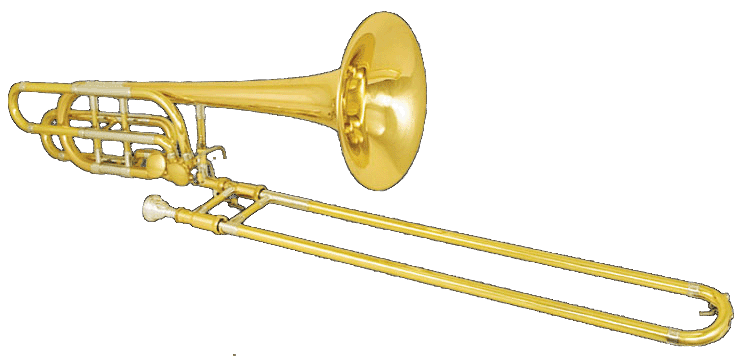
Conn Trombone Recognition Guide
Here is my attempt at a Conn trombone recognition guide. I admit that I am
less adept at spotting the differences between Conn trombones. Consequently,
this is only a general guide covering mostly instruments of 1945 and later.
There are three approaches to figuring out what model an instrument is. The
first is through the serial number and either the model number stamped on the
instrument or the model name engraved on this instrument. The second approach is
to look at the features of the instrument. I will first deal with recognizing a
model through names and numbers. If you don't know or can't tell the name and
numbers on an instrument, scroll down to the section titled "Recognizing an
instrument by its features". Thirdly, I give a list of which trombones have what
bell size (have your tape measure ready! For the metric readers: an inch is 2,54
centimeters, and as usual European commas are American periods for decimal
calculations).
Recognizing an instrument through names and numbers
The very first thing you need to do is to check and look up the serial
number. On Conn trombones I believe(!) that the serial number is
stamped near where the slide and bell sections are joined. Check the number
stamped there against the
Conn brass
serial number list. This should tell you what year the instrument was built.
Note that serial numbers on Pan American models don't match Conn serial numbers.
The next thing to do is to check for model names or numbers. For a period
from the mid 1920's through to the mid-1950's Conn stamped the model number
right above or below the serial number, where the bell and slide sections come
together. If you see a model number there (such as "1 2 H"), you are home free.
Else check if there is a name engraved on either the side of the mouthpiece
receiver/leadpipe or the bell. Check that name against the list below, which
also gives some distinguishing features.
Director
If the name engraved on the leadpipe is "Director" it is either a
14H or a
18H. If the
instrument has a Coprion bell it is an 18H. If it has a brass bell, it is a 14H.
Both the 14H and 18H Directors have a 7½" bell.
Connquest
It's probably a
77H. The 77H was produced from 1957 into the 1970's. In 1954 and 1955 Conn
produced a 20H
Connquest. These are quite rare. If your Connquest has a serial number in
the 400,000 or 500,000 range it should be a 20H. If the serial number is 600,000
or above, it is almost certainly a 77H. The 20H has a 7" bell, the 77H has a 7½"
bell.
Victor
As far as I can tell, the Victor models (4H,
6H and
10H) didn't
have "Victor" engraved on the mouthpiece receiver or the bell. However, the 10H
has a distinctive 8" Coprion bell, and nickel trim (as opposed to the 18H which
doesn't have the nickel trim). Serial numbers of the 10H should range from
5xx,xxx or 6xx,xxx to 9xx,xxx. The 6H is identical to the 10H except it doesn't
have a Coprion bell. It was produced for a longer time: 1947-1979 (serials
36x,xxx - GL9xx,xxx). The 4H was made almost continuously from 1919 to 1958,
serial numbers not higher than 6xx,xxx or 7xx,xxx.
Connstellation
A Connstellation trombone can be either a
28H,
38H or
48H. If your
Connstellation is entirely nickel plated with lacquered brass slide and tuning
slide, it is a 48H. The 48H has "Connstellation" engraved on the side of the
bell. I am not sure if that is also the case for the 28H and 38H. As far as I
can tell the 28H and 38H are very similar. The one picture I have seen of a 28H
shows the first brace on the slide section not to have curved ends for more
comfortable holding, while the 38H does have that feature. However, it might be
a replacement brace. The 28H should have a serial number in the range
38x,xxx-39x,xxx. The 38H should have a serial number between 42x,xxx through
5xx,xxx. The 48H has serial numbers from 6xx,xxx and higher. The 28H and 38H
both have 7½" bells, the 48H has an 8" bell.
Coprion
This is a 1955, possibly 1954 12H Coprion. A rare instrument indeed, because in
1955 Conn modified the 12H Coprion by increasing their weight and adding nickel
trim. The modified 12H Coprion was dropped in 1955 and replaced by the 10H
Victor. If you own one of these 12H's with "Coprion" engraved on the leadpipe:
it is rare! And please drop me a line.
Recognizing an instrument by its features
In this section I will list several features, starting with the more distinct
characteristics. There is a certain amount of overlap between the features, so
please read through the entire section.
Coprion bell
If it has a Coprion bell, it is either a
10H,
12H or a
18H. The 10H
has an 8" bell and has nickel trim. The 12H has a 7" bell, and I think (!) it
has nickel trim. Serial numbers on the 10H should be 5xx,xxx or 6xx,xxx and
higher. The 12H usually has serial numbers of 3xx,xxx through 4xx,xxx, with the
exception of the 1955 12H which has Coprion engraved on the mouthpiece receiver.
The 18H has nickel trim on the slide only, not on the bell. It has a 7" bell.
Red brass bell or Rose brass bell
The terms "red brass" and "rose brass" refer to the same thing: brass with
higher copper content, but not pure like Coprion. An instrument like this could
be a 8H,
88H,
60H or
62H. Of these
instruments, only the 8H doesn't have an F attachment. The 8H and 88H have 8½"
bells. The 60H and 62H models are bass trombones, both have a 9½" bell. The 62H
is a dual rotor trombone, with F and D attachments.
Nickel plated bell
If the instrument is entirely nickel plated with brass slides, it is a
48H. The bell
is 8", and serial numbers run from 6xx,xxx to at least GL9xx,xxx.
Single rotor/F attachment
A trombone that has only one (!) rotor, the "F attachment", can be a
88H,
60H,
71H,
72H,
70H early,
70H late or
50H The 88H
is a tenor trombone with a 8½" red brass bell. The others are bass trombones.
The 60H has a 9½"red brass bell. The 70H has a distinctive hand slide tuning
mechanism with adjustable screw. The 50H has a brass bell with a 8½" bell. The
71H and 72H are very similar. Both have 9½" brass bells. The 72H should have a
serial number in the range 5xx,xxx-Kxx,xxx. The 71H should be Lxx,xxx and up. I
recommend looking at the pattern of the F-attachment tubing when in doubt.
Dual rotor/F-D attachment
62H or
73H. The 62H
has a red brass bell, the 73H has a brass bell. Both instruments' bells are 9½".
No bell rim wire
Connqueror, 44H.
This is the "vocabell" model.
Recognizing an instrument by bell size
7" Bell
12H,
4H,
20H Connquest,
44H.
7½" Bell
14H,
18H,
28H,
38H,
32H,
77H,
8" Bell
6H,
10H,
48H.
8½" Bell
8H,
88H,
50H.
9½" Bell
60H,
62H,
70H,
71H,
72H or
73H.
The Trombone Forum
Horns, Gear, and Equipment => Instruments => Topic
started by: MoominDave on Apr 30, 2009, 07:03am
Title: Conn bass trombone genealogy
Post by: MoominDave on
Apr 30, 2009, 07:03am

Setting The Record Straight In My Head...
(Title:
Conn Bass Trombone Genealogy: Post By:
MoominDave <tromboneforum.org>)
1910: 14H introduced. Single piston valve.
1920: 70H Fuchs model introduced. 9.25" bell, large throat, .562" bore?
1921: 14H discontinued.
1924: 70H produced as standard with single bore .555" slide (and presumably
redeveloped bell flare?). It seems that the Fuchs model was too big for the
sounds of the day.
1926: 70H produced as standard with dual bore .547"/.562" slide.
1927: 14H reintroduced as student model bass trombone with dual bore
.522"/.547" slide.
1937: 70H produced as standard with single bore .562" slide. Sometimes called
Gerhard model.
1955: Replacement of 70H with 72H. 72H = late model 70H with tuning in bell
rather than in slide.
1968: Replacement of 72H with 71H, 73H, 60H, and 62H. 71H = something like 72H
with a different wrap (?); 73H = double dependent valve 71H; 60H = single
valve w/ red brass bell w/ large throat; 62H = double dependent valve 60H. 71H
and 73H are tuning in bell; 60H and 62H are tuning in slide, and were
developed from the Fuchs 70H model.
1972ish: 60H and 62H discontinued.
1979: 71H and 73H discontinued.
1980ish: 110H (single valve), 111H (double dependent valve), and 112H (double
independent valve) introduced. These were new designs, based on work by Larry
Minick - but were modified by Conn (e.g. increase in bell size to 10") to
become something that he was not willing to associate himself with.
1990ish: 111H discontinued.
2000ish: Modern 62H introduced. According to people who should know, this is
more closely related to the 112H than the old 62H.
2004ish: 62HCL and 62HG introduced. 62HCL exists in a number of different
variants (bell size and slide bore).

"CG Conn Discontinued Trombone Model Specifications Below"
| CG Conn
|
Charles Gerard
Conn started manufacturing brass instruments in Elkhart, Indiana, during the
1870s, and his company proved to be a great success. On Conn�s retirement
in 1915, the company was sold to Carl Diamond Greenleaf. Under Greenleaf�s
direction, the firm prospered, expanding still further through both organic
growth and purchase of other companies. During his stewardship also, many
instrument models and various innovations were introduced some of which are
still around today, eg the system of numbers and letters for designating
instrument models, vocabells (rimless bells), the renown Conn 88H series (it
is rumoured that Vincent Bach modelled his famous Stradivarius 42 trombones
on the 88H). This period, the following one under the administration of Paul
Gazlay (1949-1958) and a third led by Greenleaf�s son Leland, are today
considered to have been the golden years of the Conn Corporation. Conn
trombones of this fabled era have a legendary reputation amongst the
classical musicians and instruments manufactured in the 1950s and 60s are
particularly prized by collectors.
In 1969, the Greenleaf family sold the company to the
MacMillan Company, a publisher of books. The years under MacMillan ownership
were something of a disaster, a dark age for Conn. MacMillan relocated
Conn�s headquarters in Illinois, deliberately destroying historical
records in the process, leading to loss of a (now) priceless and
irreplaceable treasure trove of information about older Conn instruments. A
fine new instrument factory in Elkhart was sold to Selmer (Vincent Bach
instruments are now produced there) while Conn�s own instrument
manufacturing was largely moved to Abilene, Texas, to take advantage of
lower labour costs. However, MacMillan failed to appreciate that instrument
manufacture is a labour-intensive process requiring a skilled workforce not
to be found in Abilene. The first few years in Abilene were essentially
learning ones for the new staff, and hence quality of output was very
variable. Generally, Abilene-produced instruments have a poor reputation,
although it is possible to find examples of good quality.
In 1980, the former Conn employee Daniel Henkin
purchased the Conn Corporation from MacMillan. Amongst his achievements were
to bring the company back to Elkhart and the purchase of King Musical
Instruments. Conn and King were sold in 1985 to Skane Gripen, a Swedish
conglomerate, which formed a new parent company, United Musical Instruments
(UMI), under whose umbrella Conn and King remain today. The Abilene plant
was closed the following year and production of Conn-badged instruments
moved to Eastlake, Ohio, where King instruments were being made. Both King
and Conn instruments produced in the following decade are generally
considered by enthusiasts to be ordinary in terms of quality and character.
In the late 1990s, however, UMI has made great strides in improving its
manufacture of instruments. The updated Conn 88H models (�Generation II?
in particular have come in for considerable praise, being likened by some
professionals to be every bit as good as (if not better than) their Elkhart
counterparts (click
here to read a review on the 88H Gen2 series). It also appears that Conn
may be reintroducing or improving old Conn favourites, eg the 62H.
Note: Older Conn
trombones had Remington-style leadpipes which will only accept mouthpieces
with Remington shanks. Newer instruments and retrofitted older instruments
have leadpipes with a (Bach-style) Morse taper and hence will accept modern
mouthpieces with standard shanks.
New! Gordon
Cherry has very kindly given permission for his Conn trombone serial number
list to be reproduced on this site. Click
here here to view it.
New! According
to Don Bilger, Conn also manufactured trombones under the Pan American and
Cavalier brand names. He wasn't sure of the dates for Cavaliers, but Pan
American production apparently ran from around 1917 to 1954 and the Pan
American serial numbers don't mesh with the Conn serial number list (no
source that correlates Pan American serial numbers with production dates is
known). The Pan Americans he saw were all small straight tenors with .485"
bores and 7" bells. There was a basic model sometimes called a 64H, and a
more deluxe model with nickel trim termed the 68H. Both were reportedly
modelled on the 4H professional-grade trombone.
|
| |
2H |
|
|
|
According to the
Conn Loyalist
trombone list, this was a #1 1/2 Bore Artists' Small Bore with 6.5" or
7" Bell (Wurlitzer Special). 1919-1927, discontinued 1929. |
| |
3H |
|
|
|
According to the
Conn Loyalist
list, this was a #1 1/2 Bore Artists' Small Bore with 6.5" or 7" Bell
(Wurlitzer Special). High and low pitch. 1919-1927, discontinued 1929. |
| |
4H |
.485 |
|
|
Small-bore, favoured for
jazz, often compared with King 2B. Historical notes: according to the
Conn Loyalist
list, this designation was used for a #2 1/2 Bore Artists' Medium Bore
with 6.5" or 7" Bell (Wurlitzer Special) from 1919-1939. A #2 1/2 Bore
Artist Special with Nickel Trim was introduced in 1936 and discontinued in
1941. A #2 1/2 Bore Medium Bore Artist with Light Weight Slides was
introduced in 1940 and discontinued in 1954. A #2 1/2 Bore Medium Bore
Artist Special with Light Weight Slides was introduced in 1940 and
discontinued in 1941. A #2 1/2 Bore Victor was introduced in 1954 and
discontinued in 1958. A #2 1/2 Bore Victor with Light Weight Slides was
introduced in 1954 and discontinued in 1958. |
| |
5H |
|
|
|
According to the
Conn Loyalist
list, this was a #2 1/2 Bore Artists' Medium Bore with 6.5" or 7" Bell
(Wurlitzer Special). High & Low Pitch. High and low pitch. 1919-1932. |
| |
6H |
.500 |
|
|
Small-bore, favoured for
jazz, comparable to (but brighter than) King 3B. Historical notes: according
to the Conn
Loyalist list, this designation was used for a #3 Bore Bb Symphony Small
Bore with 7.5" or 8" Bell introduced in 1918, discontinued 1928, and
reinstated in 1937. Discontinued 1985(?). |
| |
7H |
.525 |
8.5 |
|
The 7H/78H series were
possibly cloned subsequently by Blessing as their B-7 and B-78 models. The
"new" 78H model introduced in the 1970s (ie the model number reused) was
essentially a 7H with F attachment. Information about the 7H was kindly
provided by Don Bilger. Historical notes: according to the
Conn Loyalist
list, this designation was used for a #3 Bore Bb Symphony Small Bore
with 7.5" or 8" Bell (high and low pitch) introduced in 1918, discontinued
1928. |
| |
8H |
|
|
|
According to the
Conn Loyalist
list, this was a #4 1/4 Bore Large Symphony from 1919-1934, and a #4 1/2
Bore Artist Symphony with red brass bell from 1954 to approximately 1974. |
| |
9H |
|
|
|
According to the
Conn Loyalist
list, this was a #? Large Bore Symphony from 1919-1934. |
| |
10H |
|
|
|
According to the
Conn Loyalist
list, this was a #1 1/2 Small Bore from 1919-1930, and a #3 Bore Victor
with Coprion Bell and Light Weight Slides from 1955 to 1963. |
| |
11H |
|
|
|
According to the
Conn Loyalist
list, this was a #1 1/2 Small Bore from 1919-1930. |
| |
12H |
|
|
|
According to the
Conn Loyalist
list, this was a #? Bore Bass with Piston Valve to F&E, 8 1/2" Bell and
tuning in slide from 1919-1923, a #2 1/2 Bore Coprion from 1938-1955 and a
#2 1/2 Bore Coprion with lightweight slides (available only on special
order) from 1949 to 1955. |
| |
14H |
|
|
|
According to the
Conn Loyalist
list, this was a #? Bore Bass with Piston Valve to F&E from 1919-1923, a
#4 1/2 + #3 1/2 Bore Medium Bass with rotary valve to F & E with tuning in
slide from 1927-1932 and a #2 1/2 Bore Bb Director from 1954 to 1974. |
| |
16H |
|
|
|
According to the
Conn Loyalist
list, this was a #1 1/2 Bore Alto from 1919-1948. |
| |
17H |
|
|
|
According to the
Conn Loyalist
list, this was a #1 1/2 Bore Alto (high & low pitch) from 1919-1948. |
| |
18H |
|
|
|
According to the
Conn Loyalist
list, this was a #3 Bore (Tait Model Tuning Device and Slides?) from
1919-1924, a #3 Bore "Frisco" Artist with 7", 7�" or 8" Bell from
1924-1931 and a #2 1/2 Bore Bb Director with Coprion bell from 1954 to 1974. |
| |
19H |
|
|
|
According to the
Conn Loyalist
list, this was a #3 Bore (Tait Model Tuning Device and Slides?) in high
and low pitch from 1919-1926. |
| |
20H |
|
|
|
According to the
Conn Loyalist
list, this was a #? Bore Combination Slide and Valve trombone from
1919-1926, and a #2 1/2Bore Connquest from 1954-1955. |
| |
21H |
|
|
|
According to the
Conn Loyalist
list, this was a #? Bore Combination Slide and Valve trombone from
1919-1926, and a #2 1/2Bore Connquest from 1954-1955. |
| |
22H |
|
|
|
According to the
Conn Loyalist
list, this was a #? Bore Alloo Model from 1919-1924, and a #? Bore Alloo
Model from 1928-1932. |
| |
23H |
|
|
|
According to the
Conn Loyalist
list, this was a #? Bore Alloo Model (high and low pitch) from
1919-1924. |
| |
24H |
|
|
|
According to the
Conn Loyalist
list, this was a #? Bore Large Symphony Model from 1919-1924, a #2 1/2
Bore Medium Bore Artist Ballroom Model with tuning slide in bell from
1928-1951, and a #2 1/2 Bore Bb Medium Bore Artist Ball-room Model with
tuning slide in bell from 1958 to 1970's. |
| |
25H |
|
|
|
According to the
Conn Loyalist
list, this was a #? Bore Large Symphony Model from 1919-1924, and a #2
1/2 Bore Medium Bore Artist Ballroom Model with tuning slide in bell from
1928-1951. |
| |
Connqueror 44H |
.485 |
|
|
Small-bore, vocabell. |
| |
Connstellation 48H |
.500 |
8 |
|
Small-bore, comparable to
(but brighter than) King 3B. Lightweight slide, bell may be nickel-plated. |
| |
Director 50H |
.525 |
8.5 |
F |
Medium-bore, student model.
This instrument was in continuous production from the Elkhart era throughout
all the changes of company ownership, only being discontinued recently (one
or two years ago) to make way for UMI's new 52H (a .525/.547 "basic pro"
horn with an F-attachment and 8-1/2 inch bell). Information about the 50H
was kindly provided by Don Bilger. |
| |
60H |
.562 |
9.5 |
F |
Bass trombone. Tuning in the
slide, rose brass bell. Highly regarded. |
| |
62H |
.562 |
9.5 |
F/E |
Bass trombone. Closed wrap,
dependent valves (possibly may be pulled to Eb/D, but I'm not sure about
this), tuning in the slide, rose brass bell. Very highly-regarded. A number
were converted to open wrap by the legendary Larry Minick. |
| |
70H |
|
9.5 |
F |
Bass trombone. Tuning in the
slide. Very highly-regarded - favoured by the legendary George Roberts. |
| |
71H |
.562 |
9.5 |
F |
Bass trombone. Yellow brass
bell. Highly regarded. |
| |
72H |
.562 |
9.5 |
F |
Bass trombone. Highly
regarded. |
| |
73H |
.562 |
9.5 |
F/E |
Bass trombone. Yellow brass
bell, dependent valves. Highly regarded. |
| |
Connquest 77H |
.522 |
8 |
|
Medium-bore intermediate
model, poor relation of 78H. |
| |
78H |
.525 |
8.5 |
|
Elkart era instrument was
medium-bore, professional model, yellow brass bell. Discontinued shortly
after Conn was purchased by CCM. In the 1970s, a new 78H model was
introduced (ie the model number reused) which was essentially a 7H with F
attachment. These were possibly cloned subsequently by Blessing as their B-7
and B-78 models. The 7H/78H series was discontinued around the time that
Daniel Henkin bought the company from CCM. Information about the 78H was
kindly provided by Don Bilger. |
| |
79H |
.525 |
8.5 |
F |
Elkart era instrument was
medium-bore, professional model, yellow brass bell. Discontinued shortly
after Conn was purchased by CCM. Information about the 79H was kindly
provided by Don Bilger. |
| |
98H |
.547/.562 |
9 |
F |
Essentially an 88H with a
larger bell and dual bore slide, played by George Roberts in the later
stages of his career. |
| |
111H |
.562 |
9.5 |
F/Eb |
Bass, rose brass bell,
dependent valves. |
"Edwards Trombone Slides"
Tenor Trombone Slides, Next Below
Edwards trombones are available with either the standard weight or an
optional heavier slide. The heavier slide is specified with the letter "N",
which refers to nickel sleeves and end crook. These slides can provide darker
sounds that hold together well at extreme forte volumes. All slides come with
three interchangeable leadpipes.
Large Bore
The following slides are compatible with both Edwards tenor models.
The T-STDN is the standard .547" single bore slide. This
slide has a more rounded end crook similar to Conn slides. Quick in response,
the T-STDN blows freely in all registers. A very centered tone can be achieved
with this slide.
The T-STD-AN is the standard .547" single bore all nickel
slide. This trombone slide has a more rounded end crook similar to Conn slides.
Quick in response, the T-STD-AN blows freely in all registers and adds the warm
characteristics of the nickel slides. The intensity of the fundamental is
accented with upper overtones providing a unique blend of darkenss and
brilliance.
The T-BCN has a bass end crook similar to Bach slides. The
squared-off design of this crook allows for a very open low register and a
bigger sound overall than the T-STDN slides. This slide is also a .547" bore.
The T-BC-AN has the same end crook as the T-BCN but with all
nickel outer tubes. This slide combines the width of blow with a centered sound
and quick response never before found without these material combinations.
The T-DBN is a .547"/.562" dual bore slide. This slide has a
bass crook and provides the biggest sound in the middle and lower registers,
ideal for an orchestral second trombonist.
The T-DB-AN is also a .547"/.562" dual bore, but with all
nickel outer tubes. This slide has a bass crook and provides the biggest sound
in the middle and lower registers, ideal for an orchestral second trombonist.
Medium Bore
All of the above slides may be used on the T327. However, there are slides
exclusive to this model.
The T327-1(N) is a .525" single bore slide. Using this
slide, the T327 is similar in size to a Bach 36.
The T327-2N is a .525"/.547" dual bore slide. This slide
helps bridge the gap between the medium and large tenor trombones. This slide is
only available with the nickel sleeves and end crook.


Small Bore
Edwards jazz trombones are available with either a yellow brass or nickel
slide. The nickel slide is specified with the letter "N". All slides come with
three interchangeable leadpipes.
Nickel slides are now available with a single radius endcrook for the .500"
and .508" bore slides. This endcrook works great for individuals that want a
feel similar to the 2B or 3B but with the modularity of an Edwards.
The T-302-1 is a .500" single bore all yellow brass slide
with dual radius endcrook. This slide provides a player with the greatest
flexibility in the upper register and is great for lead playing.
The T-302-1N is a .500" single bore slide with dual radius
endcrook and nickel outer tubes.
The T-302-1N-S is a .500" single bore slide with single
radius endcrook and nickel outer tubes.
The T-302-2 is a .500"/.508" dual bore slide all yellow
brass slide. This slide bridges the gap between the smaller T-302-1 and T-302-3
slides.
The T-302-2N is a .500"/.508" dual bore slide with nickel
outer tubes. (dual bore jazz slides are not currently available with single
radius endcrooks)
The T-302-3 is a .508" single bore slide with all yellow
brass outer tubes and dual radius endcrook. This slide has the most open feel of
any Edwards jazz slide.
The T-302-3N is a .508" single bore slide with nickel outer
tubes and dual radius endcrook.
The T-302-3N-S is a .508" single bore slide with nickel
outer tubes and single radius endcrook.
Edwards Bass Trombone Slides, Next Below


Edwards bass trombones are available with either all nickel outer
slide, or yellow brass outer tubes with nickel sleeves and end crook. Each
slide carries different sound characteristics to allow you to change the
color of your Edwards to your ideal sound. All slides come with three
interchangeable leadpipes.
The B-STDN is the standard .562" bore bass trombone
slide. This slide provides a player with greater flexibility in the upper
register. It is most comparable to the Bach 50 slide. The B-STDN has an
yellow brass outer slide with nickel sleeves and endcrook.
The B-STD-AN is the standard .562" bore all nickel
bass trombone slide. The B-STD-AN has an all nickel outer slide without
nickel sleeves. The all nickel slides are drawn to the same wall
thicknesses as our yellow outer tube slides. This ensures forte volumes
stay well in control by the player while giving a faster response and more
core to the sound.
The B-DBN is a .562"/.578" dual bore slide. This slide
adds width to the sound and blows freely in the low register. The B-DBN
has a yellow brass outer slide with nickel sleeves and endcrook Three
leadpipes aid the player in achieving the desired compression of the
individual instrument.
The B-DB-AN is a .562"/.578" all nickel dual bore
slide. This slide adds width to the sound and blows freely in the low
register. Three leadpipes aid the player in achieving the desired
compression of the individual instrument. The all nickel slides are drawn
to the same wall thicknesses as our yellow outer tube slides. This ensures
forte volumes stay well in control by the player while giving a faster
response and more core to the sound.
Order Now
- Base Price:
- Call (800) 562-6838 for price
- Availability:
- Usually ships in 1-2 weeks
Read warranty and return policy information
Latest Blog Post
Upcoming Dave Taylor Performances
Dave Taylor will be performing two upcoming concerts in Washington,
DC. First up is a performance with Kenny Drew, Jr. and Daniel Schnyder:
Saturday, February 18, 2012 @ 8:00 & 10:00pm Bohemian Caverns Nightclub
11th & U Street, NW Washington, DC Tickets: $20 addvance, $25 door More
info » In March, Dave returns to DC [...]
more ››
The Conn Loyalist Main
index > The Conn
Loyalist Trombone Page >
What do the
Trombones Look Like?
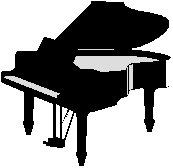


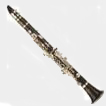
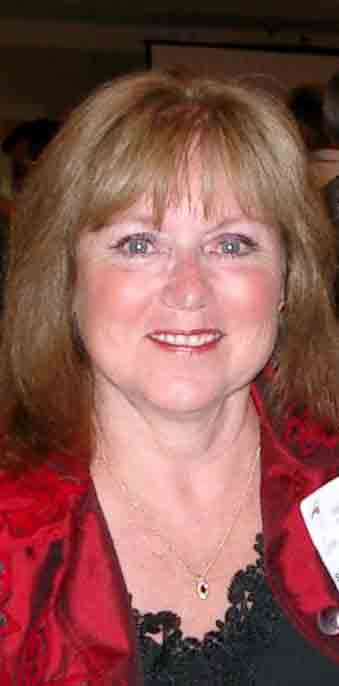
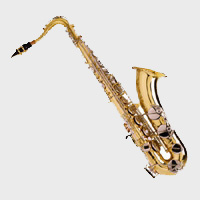
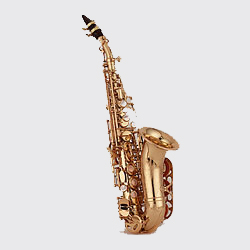




In Their Own Words
"I like the sound color that it has and also the different changes of sound that I can make with the trombone and definitely is much easier to play legato and high. For me is not good only for orchestra but for solo, too. I do both things and it works perfect. I am happy to play an Edwards."
Unai Urrecho
Principal Trombonist, Daejeon Philharmonic Orchestra